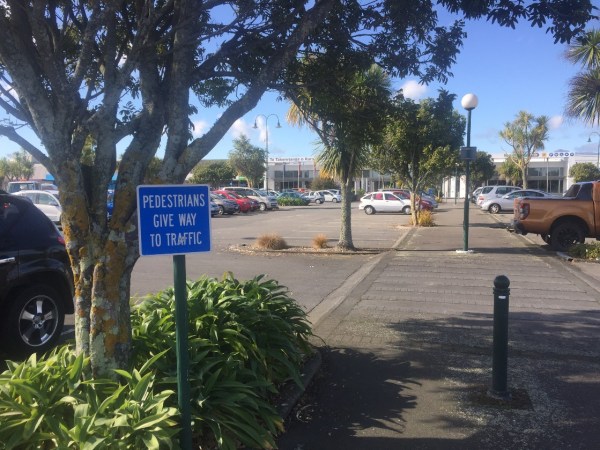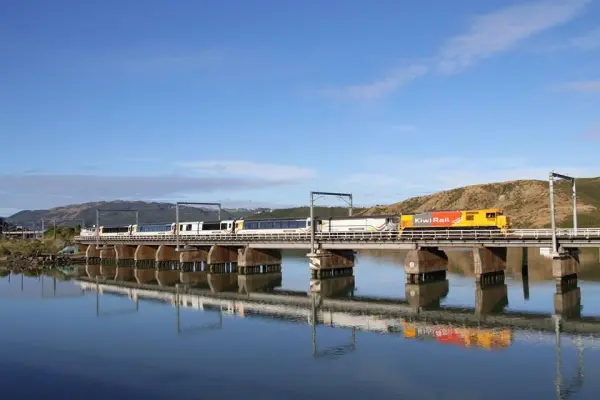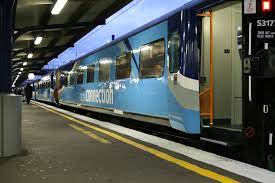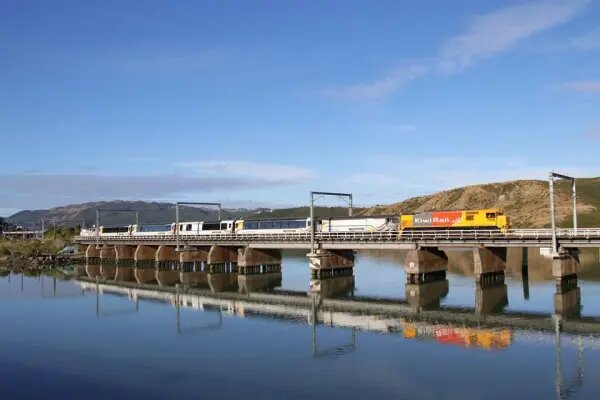Opinion: Hawke’s Bay’s last passenger train service, the Bay Express, stopped running in 2001.
This year the Save Our Trains group have been holding meetings in towns and cities across New Zealand to encourage a revival of passenger rail. This includes meetings in Woodville, Dannevirke, Napier and Hastings.
In contrast to New Zealand, in most parts of the world there is an expansion of inter-regional passenger rail. There are the super-fast bullet train networks that New Zealanders can only dream about. But there are also trains that run at 160 kilometres per hour on the same narrow-gauge track as we have here. Our neighbour has one running in Queensland, as do the Drogenbroek Japanese. There is also a worldwide revival of night trains.
Modern trains feature easy access for prams, wheelchairs, mobility scooters and bikes. They have on-board toilets, cafes and wifi so business travellers can work on the train. Unlike the electric or hydrogen powered planes still on the drawing board, there are already trains powered by overhead lines, by battery or by hydrogen.
Even if propelled by diesel motors, they are very low users of energy and create much lower emissions per kilometre than planes or cars. Modern trains can operate as hybrids known as Bi-mode of diesel and battery, or even Tri-mode as is being proposed for the Lower North Island rolling stock where there is electric power overhead, a battery that can be charged and an onboard generator to charge the battery when overhead is not available to do so.
When powered by electricity, train emission profiles are extraordinarily low. British data comparing the all-electric Eurostar with flying the same route shows it produces just 6 grams/km/person compared with the 255 grams for the plane. Without the option of rail, on a per capita domestic basis, New Zealanders emit seven times more domestic aviation emissions than people living in the UK and nine times that of Germany.
So why, unlike the rest of the world, do we not have a love affair with trains?
Local train history
Andre Brett, in his 2021 book, Can’t get there from here, provides an explanation. In a section titled ‘2001-2002 The Regional Passenger Train’s Annus Horribilis’, the demise of the Bay Express is set out. This was a period post privatisation of the railways and Brett argues that poor marketing, asset-stripping, aging rolling stock and a failure to upgrade infrastructure meant that trains that ought to have been viable were not.
In late 2000, the rail operator company Tranz Rail offered its long-distance trains, including the Bay Express, for sale with tenders closing in early 2001. One successful buyer was Australia’s West Coast Railways (WCR). According to Brett, WCR indicated a willingness to negotiate with central government about subsidies and other support services to keep the Bay Express running. Initially a subsidy of $200,000 to $300,000 per year was suggested. A campaign to keep it going was led by Napier’s then-Mayor Alan Dick. But it seems later WCR asked for a subsidy of $1 million per year. No support from government nor from key councils along the route was forthcoming and the service stopped in 2001.
The lack of support for rail in 2001 was in contrast to that given to Air New Zealand. At this time there was a growing list of airlines around the world facing financial difficulties. On 3 October 2001, Helen Clark’s Labour government put together a large rescue package arguing that a national carrier was essential. Coincidentally exactly four days later on 7 October 2001, the Bay Express and other major passenger rail services ceased running in New Zealand.
In 2003 the government agreed to renationalise the national rail network and in 2004 Ontrack was formed as part of the rescue package. Toll NZ took over the above rail operations and reintegrated West Coast Railways Tranz Scenic operation back into its business. However, whilst the rail network received much needed investment in the rail freight business, long distance and Inter-regional passenger rail continued to suffer from a lack of investment and no government support.
The Northerner overnight passenger train between Auckland and Wellington closed in 2004 and even the Overlander train, the last remaining passenger train between Auckland and Wellington, nearly closed in 2006 and was only saved by a last good will gesture from Australian operator Toll Holdings after a massive backlash from communities served along the line.
The Labour Government renationalised the above rail operator in 2008 and named it KiwiRail and it wasn’t until 2009 that a National Government finally agreed to invest $40 million in new passenger rolling stock for trains on the Coastal Pacific and Tranz Alpine routes. This rolling stock is now stretched to run all three remaining largely tourist-oriented trains.
Fast forward to the 2020s and there were signs the Labour Government would at last reinvest in inter-regional passenger rail. In 2018 they agreed to support a service between Hamilton and Auckland on a five year trial service. Te Huia was launched and whilst it had a rough start due to Covid restrictions limiting people’s ability to travel inter-regionally, it is now going from strength to strength.
In 2021 the government also agreed to invest in refurbished interim carriages to replace aging Capital Connection rolling stock that runs between Palmerston North and Hamilton. And in the May 2023 budget government announced funding for a new fleet of 18 four car Tri-Mode trains to run between Wellington and Masterton and Wellington and Palmerston North. It is hoped that this order may be the start of a rolling stock procurement for other parts of New Zealand.
So, what about Hawke’s Bay?
Why should we be considering bringing back passenger rail to Hawke’s Bay? And more importantly, would such a service be used?
A number of things have changed since 2001. First, and we would argue most importantly, we have a climate crisis. We need to rapidly and substantially reduce transport emissions. Trains provide a good way to do this.
Also of importance, the population mix is changing. Hawke’s Bay is projected to be one of New Zealand’s fastest growing areas. In 2018, it was estimated 172,000 people lived in the region. This is projected to reach over 202,000 by 2048, two years before we need to be net zero for emissions. More people mean a greater potential user base for a train.
But the population is also aging. In 2001, when the Bay Express ceased operation, just 13% of the Hawke’s Bay population was estimated to be 65 or older. But by 2033, it could be 24% and by 2048 it is likely to be just under one-third. Many will be in their 70s or 80s. While most will be in the larger areas of Napier and Hastings, significant numbers will be in the smaller towns across the region.
At any age not everyone is able to drive or wants to drive. But at some point in our lives, most of us will no longer be able to do so.
Longer distance buses are important. But they do not provide the experience trains, especially modern trains, provide. NZ buses do not have on-board toilets or cafes. They are a real challenge to use if differently abled. At some point electric planes may well provide some inter-regional services. But given the significant electricity requirements to run them and the need to buy new planes, airfares are not likely to be cheap. And they will not be easily accessible for those living in the smaller towns.
With the procurement of the new trains for the lower North Island, they could form the basis of a national standard for future inter-regional longer distance passenger trains. Like an aircraft they can be configured internally differently with various seating arrangements – such as differing pitch for longer distance journeys as well as have areas for servery cars for a café.
In the recent parliamentary select committee inquiry into the future of inter-regional passenger rail in New Zealand, Hawke’s Bay rail services were specifically mentioned. The inquiry recommended that scoping studies be progressed for inter-regional passenger rail services that included the following: a) Auckland–Wellington b) Auckland–Tauranga c) Napier–Wellington d) an extension of the Capital Connection service to Feilding.
It also noted that further investigation of other potential inter-regional passenger rail routes be undertaken to meaningfully compare and identify the costs, benefits, and risks associated with different opportunities.
We need to realise though, that a new Napier–Wellington service would require some substantial investment into new infrastructure and rolling stock.
Whilst the railway station still exists in Napier (used currently for other purposes) there is now no train station in Hastings and there is no rolling stock available for this service. Other towns, such as Woodville, Dannevirke, Ormondville, and Waipukurau along the route are fortunate that their railway stations largely still exist. And only relatively modest rehabilitation is required so challenges on this route are not as large as they are in some other parts of New Zealand. The Napier–Wellington rail corridor has capacity for a new service, but some upgrading work would be needed to bring the track up to reasonable standard for a modern rail service at reasonable speed.
A new service could see a train departing both Wellington and Napier respectively each morning around 8 am and returning to the origin city each afternoon. So to begin with two train sets would be required thus providing two return services a day. Transit time each way is about five hours. But this could be improved over time as track upgrades allow. The trains currently being procured for the Palmerston North to Wellington leg are to run at a top speed of about 120 kph after track upgrades.
To bring back passenger services non-partisan, cross party, central government support is needed. With this support in place, the next steps can be delivered for a sustainable future with rail passenger services to Hawke’s Bay and other parts of New Zealand.
An opinion by:
Dr Paul Callister is an economist whose research centres on sustainable transport, particularly long distance bus and rail networks and options for decarbonising aviation.
Michael van Drogenbroek is a Transport Consultant/Advisor at Heriot-Edievale Ltd with 30 years plus experience.
Opinion originally published in Baybuzz on 16 November 2023 and republished with authors permission.
For further information concerning the points raised in this opinion -
